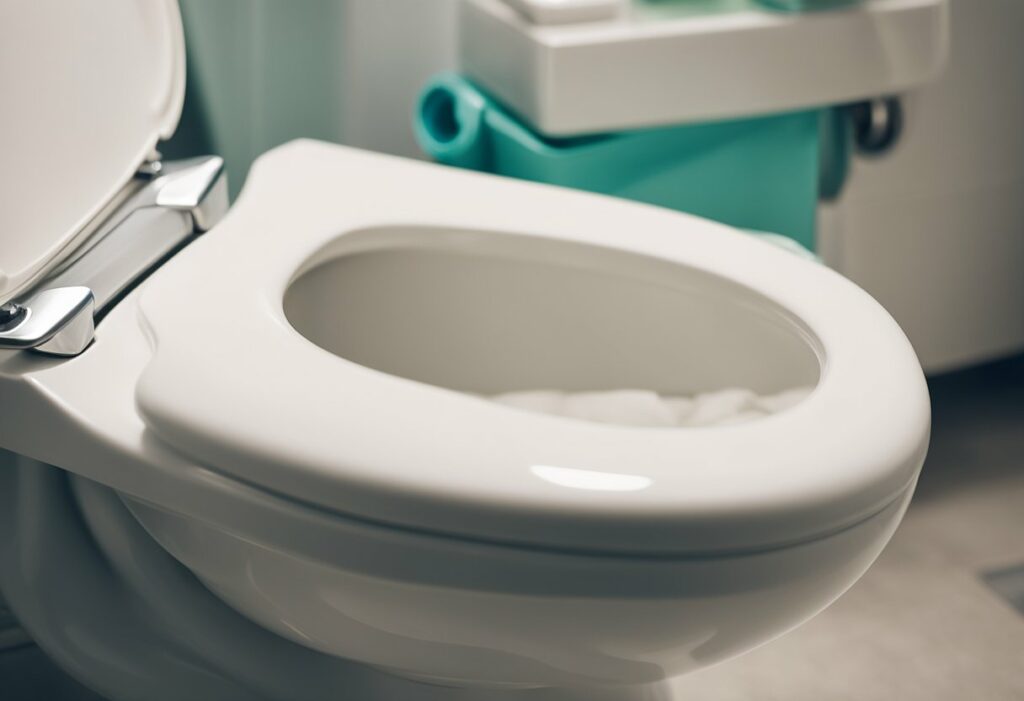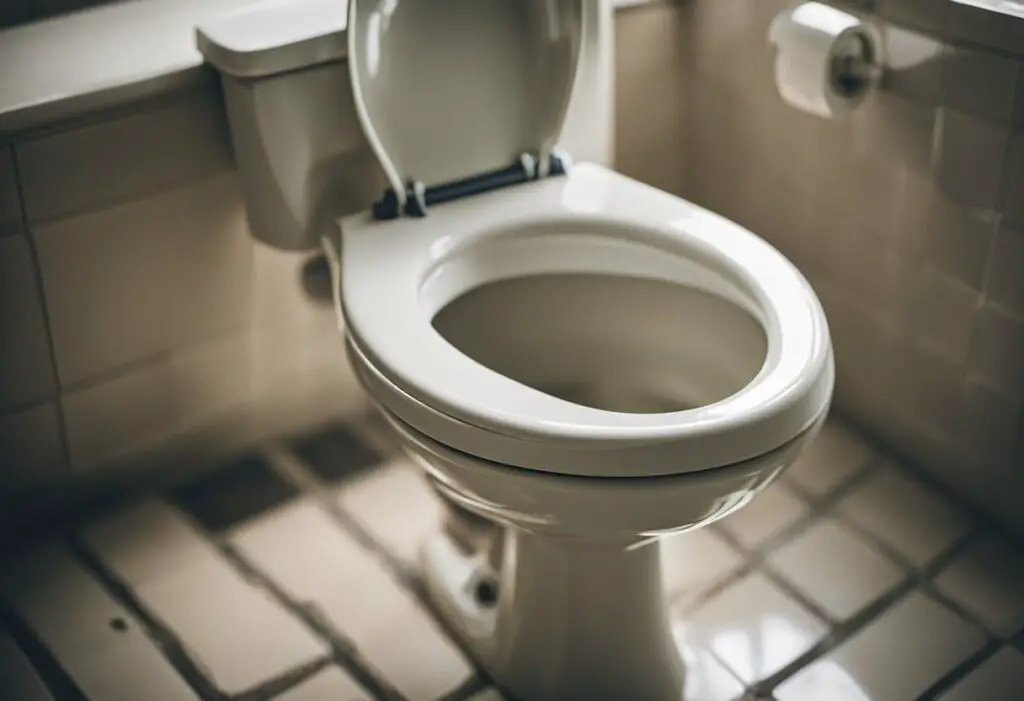Maintaining a clean toilet is essential for good hygiene and overall health. While most people know the importance of cleaning their toilet bowl, many are unsure of how often they should do so. The frequency of toilet cleaning depends on several factors, including the number of people in your household, your personal hygiene habits, and the presence of any health issues.

Toilet cleaning frequency can vary from household to household. Generally, it is recommended to clean your toilet bowl at least once a week to prevent the buildup of bacteria and other microorganisms that can cause foul odors and potential health hazards. However, if you have a large family or frequently use the toilet, you may need to clean it more often to maintain proper hygiene.
In addition to regular cleaning, it is important to perform maintenance tasks such as checking for leaks, replacing worn-out parts, and using the right cleaning products to ensure your toilet remains in good condition. By following these tips, you can maintain a clean and healthy toilet that is safe for you and your family to use.
Understanding Toilet Cleaning Essentials
Toilet cleaning is an essential part of maintaining a healthy and hygienic home. Regular cleaning not only keeps the toilet looking clean but also helps to eliminate harmful bacteria that can cause illness. In this section, we will discuss the essentials of toilet cleaning, including choosing the right cleaning products and protective gear.
Choosing the Right Cleaning Products
When it comes to cleaning your toilet, there are several options available. You can use an all-purpose cleaner, a toilet bowl cleaner, or a disinfectant. All-purpose cleaners are suitable for general cleaning, while toilet bowl cleaners are specifically designed for cleaning the inside of the bowl. Disinfectants are useful for killing bacteria and germs.
When choosing a cleaning solution, it’s essential to consider the ingredients. Some cleaners contain bleach, which can be harmful to the environment and your health. Others contain vinegar, which is a natural and effective cleaning agent. You can also make your cleaning solution by combining water and baking soda.
Protective Gear and Safety
Cleaning your toilet can be a messy job, and it’s essential to protect yourself from harmful bacteria and chemicals. Always wear rubber gloves to prevent skin irritation and avoid contact with cleaning products. Additionally, make sure to keep the bathroom well-ventilated by opening a window or turning on a fan.
Routine Cleaning Frequency

Maintaining a regular cleaning schedule for your toilet bowl is crucial to keep it sanitized and free from germs and bacteria. Here are the recommended cleaning frequencies for different types of toilet cleaning.
Daily Maintenance
Daily maintenance of your toilet bowl is essential to keep it clean and hygienic. Use a toilet brush to scrub the inside of the bowl and flush it with water. You can also use disinfecting wipes to clean the seat and exterior of the toilet. Make sure to wash your hands thoroughly after cleaning.
Weekly Deep-Clean
A weekly deep-clean of your toilet bowl is necessary to remove any stubborn stains and buildup. Use a bathroom cleaner and a sponge or microfiber cloth to clean the inside of the bowl, including under the rim. Scrub the seat and exterior of the toilet with disinfecting wipes or a bathroom cleaner. Rinse the bowl and wipe it dry with a clean cloth.
Biweekly Checks
In addition to daily and weekly cleaning, it’s essential to perform biweekly checks to ensure that your toilet bowl is in good condition. Check for any leaks or cracks in the bowl or tank. Inspect the toilet brush and replace it if it’s worn out. Make sure to wash your hands after performing these checks.
Targeting Problem Areas

When it comes to cleaning your toilet bowl, targeting specific problem areas can help you achieve better results. Here are some tips for dealing with three common issues:
Dealing with Hard Water Stains
If you live in an area with hard water, you may notice mineral buildup in your toilet bowl. These stains can be difficult to remove with regular cleaning methods. To tackle hard water stains, you can try using a pumice stone or a bowl cleaner specifically designed for hard water.
When using a pumice stone, make sure to wet it first and then gently rub the stain until it disappears. Be careful not to scratch the porcelain. For bowl cleaners, look for products that contain acid, which can dissolve mineral buildup.
Removing Mold and Mildew
Mold and mildew can grow in damp areas, such as your toilet bowl. To remove these unsightly stains, you can use a toothbrush and a cleaning solution that contains bleach or hydrogen peroxide.
Apply the solution to the affected area and let it sit for a few minutes. Then, scrub the stain with a toothbrush until it disappears. Rinse the bowl thoroughly with water.
Addressing Toilet Bowl Rings
Toilet bowl rings are a common problem that can be caused by mineral buildup, hard water, or bacteria. To address this issue, you can use a bowl cleaner that contains acid or a pumice stone.
Apply the cleaner to the affected area and let it sit for a few minutes. Then, scrub the stain with a toilet brush until it disappears. For pumice stones, wet the stone first and then gently rub the stain until it disappears. Be careful not to scratch the porcelain.
By targeting problem areas with the right cleaning techniques and products, you can keep your toilet bowl looking clean and fresh.
Advanced Toilet Cleaning Tactics
Keeping your toilet bowl clean is essential for maintaining a healthy and hygienic bathroom. However, there are other areas of your toilet that require attention as well. In this section, we will cover some advanced toilet cleaning tactics to help you keep your toilet in tip-top shape.
Cleaning the Toilet Tank
The toilet tank is the reservoir that holds water for flushing. Over time, mineral deposits, rust, and other debris can accumulate inside the tank, leading to clogs and other issues. To clean the toilet tank, turn off the water valve and flush the toilet to empty the tank. Then, use a disinfecting spray and a scrub brush to clean the inside of the tank. Be sure to rinse the tank thoroughly before turning the water back on.
Sanitizing the External Surfaces
In addition to cleaning the inside of the toilet bowl, it is also important to clean the outside of the toilet. This includes the handle, seat, and lid. Use a disinfecting spray and a clean cloth to wipe down these surfaces regularly. Be sure to pay special attention to areas that come into contact with your skin.
Experts recommend using bleach or another disinfecting agent to kill bacterial and germs effectively. When using bleach, be sure to follow the instructions carefully and use the proper dilution ratio. Also, be sure to wear gloves and avoid mixing bleach with other cleaning agents.
By following these advanced toilet cleaning tactics, you can keep your toilet clean and hygienic, reducing the risk of illness and other issues.

